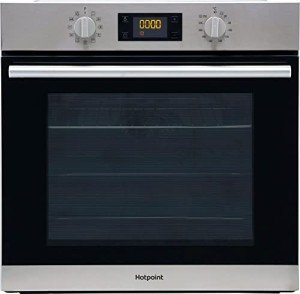
15
Juni10 Meetups About Single Oven You Should Attend
The Ultimate Guide to Single Ovens: Features, Benefits, and FAQs
When it concerns modern-day kitchen appliances, the single oven sticks out as a versatile and necessary tool for any cooking lover. In today's fast-paced world, where convenience fulfills cooking workmanship, single ovens play a critical function in meal preparation. Comprehending the functions, advantages, and kinds of single ovens can simplify the procedure of selecting the perfect home appliance for your kitchen. This thorough guide aims to provide a thorough look at single ovens, their requirements, and responses to often asked questions.
What is a Single Oven?
A single oven is a kitchen device that includes one primary cooking compartment. It is created to perform numerous cooking functions such as baking, roasting, broiling, and more. Unlike double ovens, which consist of 2 different cavities, single ovens take full advantage of space performance, making them appropriate for smaller kitchen areas or those who regularly prepare meals for a few people.
The Anatomy of a Single Oven
In order to value the performance of a single oven, comprehending its key parts is vital:
| Component | Description |
|---|---|
| Cooking Cavity | Main space where food is put for cooking. |
| Control board | Interface for picking cooking modes and adjusting temperature. |
| Heating Elements | Metal coils that produce heat (frequently discovered at the top and bottom). |
| Oven Door | Glass panel that allows visibility into the cooking space. |
| Racks | Detachable racks that accommodate different dishes at different heights. |
Types of Single Ovens
Single ovens been available in various types based on their heating techniques and designs. Here are some popular options:
Conventional Ovens: Utilize gas or electrical energy for a conventional cooking experience. They supply consistent heat for baking and roasting.
Convection Ovens: Equipped with a fan that distributes hot air, resulting in faster cooking times and even heat distribution.
Steam Ovens: Use steam to cook food, keeping moisture and nutrients. Perfect for healthier cooking approaches.
Wall Ovens: Built into the wall to conserve area; they can improve kitchen looks while providing functionality.
Microwave Ovens: While not a standard oven, modern-day microwave ovens can likewise bake and roast, offering convenience for quick meal prep.
Functions to Look for in a Single Oven
When acquiring a single oven, consider the following functions to ensure you pick an appliance that fits your cooking needs:
Capacity: Ensure the oven's size accommodates your normal cooking volume. Requirement capabilities normally range from 4.5 to 6 cubic feet.
Temperature Range: Look for an oven that provides a large temperature level range for different cooking strategies.
Self-Cleaning Options: Self-cleaning modes bypass the need for severe chemicals, making upkeep simpler.
Smart Technology: Wi-Fi-enabled designs permit remote operation and tracking through smartphone applications.
Interior Lighting: Bright, incandescent or LED lighting assists monitor your food without unlocking.
Average Sizes and Capacities of Single Ovens
| Type | Average Capacity (cubic ft) | Width (inches) | Height (inches) |
|---|---|---|---|
| Standard Conventional | 5.0 - 6.0 | 30 | 28 - 30 |
| Compact/Apartment Size | 3.0 - 4.0 | 24 | 28 - 30 |
| Wall Oven | 4.5 - 5.0 | 24 - 30 | 28 - 30 |
Advantages of Using a Single Oven
Buying a single oven offers numerous benefits for both amateur cooks and seasoned chefs alike:
Space Efficiency: A single oven inhabits less area than a double oven, making it best for smaller sized kitchens.
Cost-efficient: Generally more economical compared to double ovens, both in preliminary purchase and energy consumption.

Adaptability: Capable of performing different cooking methods, making it suitable for a range of dishes.
Reduce of Use: With a smaller sized cooking location, heat circulation tends to be more reliable, streamlining the cooking procedure.
Maintenance: Fewer elements mean less complexity when it comes to cleaning and repairs.
Regularly Asked Questions (FAQs)
What is the typical life-span of a single oven?
A single oven generally lasts between 10 to 15 years, depending upon usage, upkeep, and the quality of the device.
How can a single oven save energy?
Single ovens require less power than double ovens, and many designs are created with energy efficiency in mind, lowering general energy consumption.
Can a convection oven replace a basic oven?
Yes, a stove can change a standard oven as it uses similar cooking functions alongside quicker cooking times.
Are single ovens suitable for large families?
While single ovens can accommodate a decent amount of food, bigger households might discover that a double oven or an extra single oven matches their requirements better.
How often should I clean my single oven?
It is recommended to clean your oven every 3 to 6 months, depending upon usage, to preserve hygiene and efficiency, particularly with designs that feature self-cleaning choices.
Is setup challenging for a single oven?
Most single ovens come with uncomplicated setup instructions. However, consulting a professional is suggested for safe and correct setup, especially for gas ovens.
The single oven stays a cornerstone home appliance in cooking areas worldwide. Its versatility, effectiveness, and space-saving design make it an appealing option for many homes. Whether you are a periodic cook or a culinary enthusiast, picking the ideal single oven can significantly improve your cooking experience. With the info shared in this guide, potential purchasers can make a notified choice, guaranteeing they select an oven that best matches their cooking needs and way of life.

Reviews